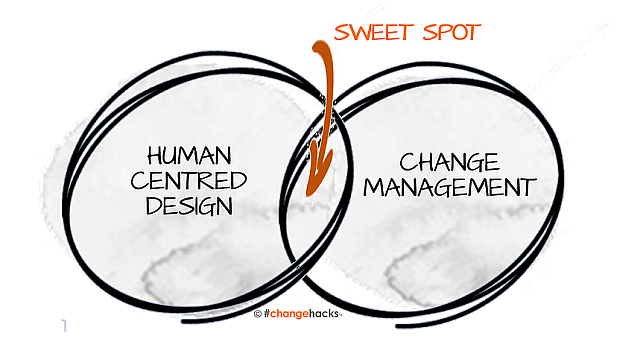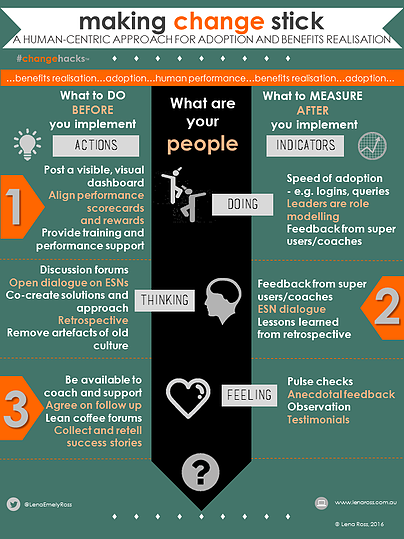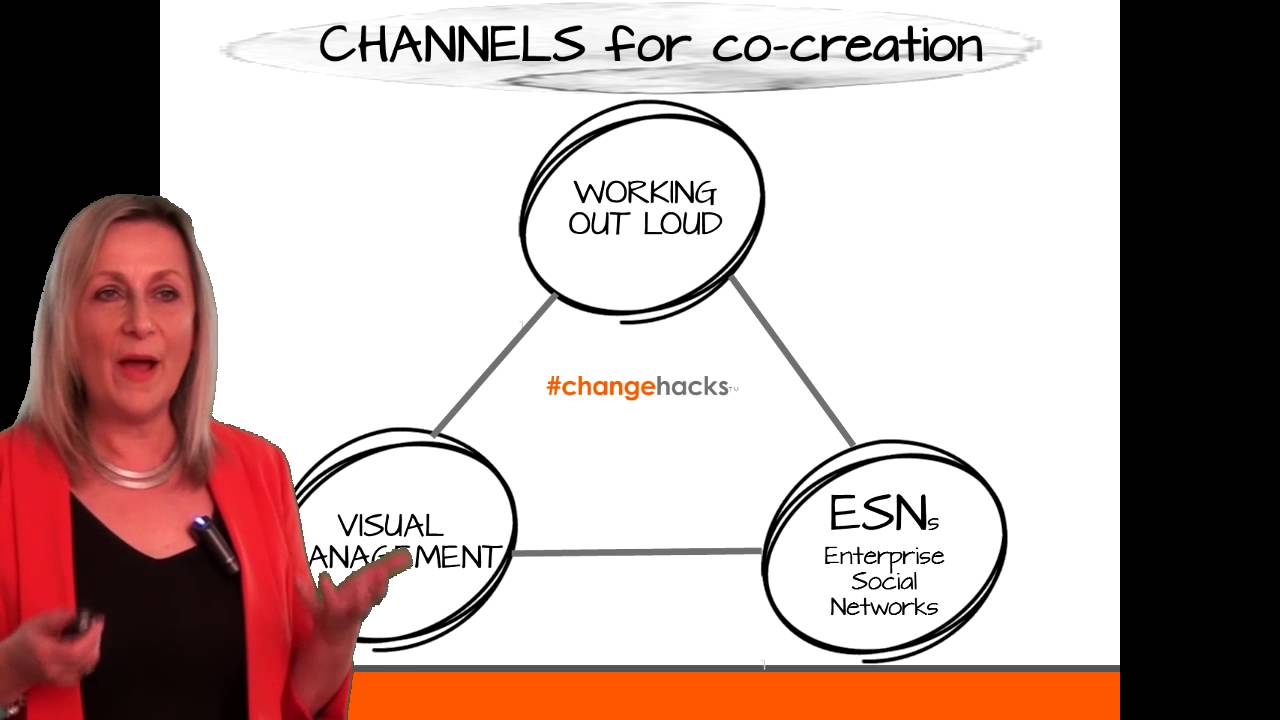
Change hack 8: Using human-centred design in change management [Change hacks series]
This is part 8 of a series of articles on ‘change hacks’ from expert change management speaker and facilitator Lena Ross.
There’s this experience most of us have when we buy a new car. Let’s say it’s a green Volvo. Once you own it, you notice there are quite a few people around driving the same car as you. There’s a nifty scientific term for that called the reticular activating system, which is like a switch you activate in your brain once you dedicate attention to something. Think of it like a search function in your brain.
Well, that same switch has been activated in my brain, and the search is on for all things related to human-centred design. Human-centred design, often simply abbreviated to HCD, is also known as design thinking. You will see the term associated with user experience (UX), customer experience (CX), customer centricity, and systems thinking. And, now that switch is now firmly ON in my brain, I’m noticing a lot more about product design than ever before – especially the ones lacking HCD! Some of these design-challenged flaws are small ones, such as a door handle in a café that’s positioned in a way that’s not intuitive to how we use it.
Anyway, back to HCD. Overall, it’s about designing a solution or product with the user in mind. The key principle is that the people who face the problems, or use the product, are the ones who can provide the most relevant insights and solutions.
And because a solution or new product usually translates to change, it’s now entering the world of change management.
Why we need to know more about HCD
The practice of change management is demanding a new set of capabilities to complement our existing ones. We’re now leading and managing change in a disruptive environment, fraught with complexity and ambiguity. Customers are setting a high bar with expectations that are being met by the disruptors (think Uber, AirBNB, Kogan, Amazon, Netflix…the list goes on), so the pressure is on all businesses to be not only nimble and responsive to what the user wants, but also sufficiently innovative to create new demands.
The sweet spot – putting it into practice
So, how can we integrate what we know about HCD into our change plans and interventions, which in turn, can drive meaningful conversations with our stakeholders and impacted employees?
 Whilst the concept of HCD is often applied for customer personas and developing empathy for our customers, the same thinking can be used to plan and introduce change. Consider our impacted employees are our internal customers who can provide deep insights. To illustrate this approach, I’ve designed this infographic as a guide for applying a HCD lens to our planning for adoption and benefits realisation, by looking at these three elements before and after the implementation:
Whilst the concept of HCD is often applied for customer personas and developing empathy for our customers, the same thinking can be used to plan and introduce change. Consider our impacted employees are our internal customers who can provide deep insights. To illustrate this approach, I’ve designed this infographic as a guide for applying a HCD lens to our planning for adoption and benefits realisation, by looking at these three elements before and after the implementation:
- What do we want our people to DO
- What do we want them to THINK
- What do we want them to FEEL
This guide is now being used to initiate conversations with stakeholders and impacted employees, to plan change actions leading up to implementation. The employees are being asked what they want to see take place before implementation to support adoption, so a collaborative approach starts early in the change planning.
Taking it one step further – into the metrics
Change managers are often asked – how do we measure the success of the change effort? How do we know that adoption has occurred and has been successful?
The infographic takes it one step further, showing what we can measure after the change is implemented, through the lens of the same three human elements of doing, thinking and feeling. Taking this approach sends a clear message that we’ve not only considered the metrics early in our planning, but that our success measures also have a human-centric focus.
By asking employees what they see themselves doing, along with how they want to feel, and what they want to think after implementation means we are asking them to play a meaningful role in imagining a successful future state. This involvement through future-pacing prepares people for the change, with visual imagery. It engages them in what success looks like, giving them a positive view of the new world. The key benefit for change practitioners is that we gain insights into what a desired future state looks like from a user’s perspective.
Sharpening the focus on our people
Applying the HCD lens sharpens our focus to the people side of our change practice, taking us back to the very heart of what we do: to help our people adopt the change. With this view, HCD becomes a valuable part of our toolkit when developing change plans, and a capability we need to build. In doing so, we’re demonstrating to our clients and project teams that we’re aligning our capability and value as change professionals to the changing demands of the business environment.
On a final note, in just one long weekend, I noticed five green Volvos and one hotel door handle that was designed the wrong way around!
If there are ways to improve collaboration and co-creation and integrate emerging capabilities in your work, what’s stopping you? For additional information please see my website.
Next edition: Change hack 9: Untapping the hidden influencers in your organisation.
Article source: Change hack 8: Using human-centred design in change management.






